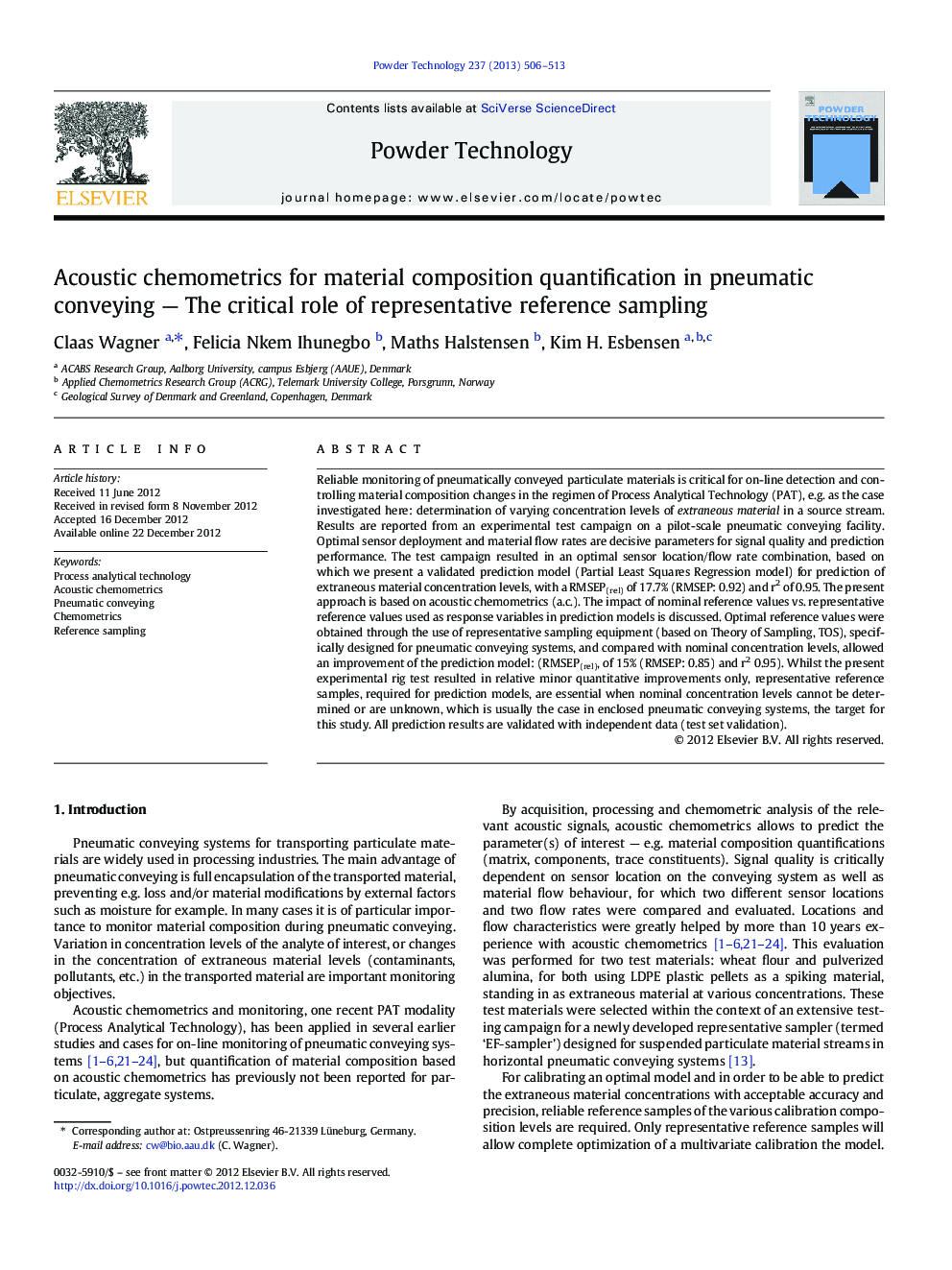| کد مقاله | کد نشریه | سال انتشار | مقاله انگلیسی | نسخه تمام متن |
|---|---|---|---|---|
| 236869 | 465686 | 2013 | 8 صفحه PDF | دانلود رایگان |

Reliable monitoring of pneumatically conveyed particulate materials is critical for on-line detection and controlling material composition changes in the regimen of Process Analytical Technology (PAT), e.g. as the case investigated here: determination of varying concentration levels of extraneous material in a source stream. Results are reported from an experimental test campaign on a pilot-scale pneumatic conveying facility. Optimal sensor deployment and material flow rates are decisive parameters for signal quality and prediction performance. The test campaign resulted in an optimal sensor location/flow rate combination, based on which we present a validated prediction model (Partial Least Squares Regression model) for prediction of extraneous material concentration levels, with a RMSEP(rel) of 17.7% (RMSEP: 0.92) and r2 of 0.95. The present approach is based on acoustic chemometrics (a.c.). The impact of nominal reference values vs. representative reference values used as response variables in prediction models is discussed. Optimal reference values were obtained through the use of representative sampling equipment (based on Theory of Sampling, TOS), specifically designed for pneumatic conveying systems, and compared with nominal concentration levels, allowed an improvement of the prediction model: (RMSEP(rel), of 15% (RMSEP: 0.85) and r2 0.95). Whilst the present experimental rig test resulted in relative minor quantitative improvements only, representative reference samples, required for prediction models, are essential when nominal concentration levels cannot be determined or are unknown, which is usually the case in enclosed pneumatic conveying systems, the target for this study. All prediction results are validated with independent data (test set validation).
We calibrate/validate a successful PLS-R model, based on optimal sensor location/flow rate combination for prediction of extraneous material concentration levels in pneumatically conveyed material streams. The impact of nominal reference values vs. representative reference values used as response variables in prediction models is discussed.Schematic drawing of pneumatic conveying system indicating sensor locations and source of y-values (representative/nominal).Figure optionsDownload as PowerPoint slideHighlights
► Prediction model for material composition quantification in pneumatic conveying
► Test campaign resulted in an optimal sensor location/flow rate combination
► Reliable reference values obtained through the use of a representative sampler
► Comparison of nominal versus representative reference samples as response variable
► All prediction results are validated with independent data (test set validation).
Journal: Powder Technology - Volume 237, March 2013, Pages 506–513